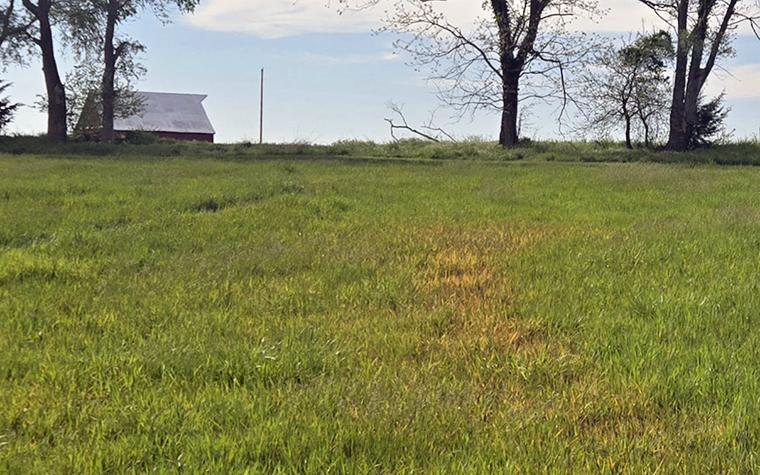ST. JOSEPH, Mo. – Mistakes on the farm can be costly in money, time and relationships. When a service provider sprays the wrong field or leaves a gate open and the cows get out, tempers can flare.
Don’t let mistakes interfere with longtime relationships in your community, says University of Missouri Extension agricultural business specialist Katie Neuner.
Business relationships in small towns are unique, Neuner says. Suppliers and vendors often are neighbors or friends; their child may even be on the same ball team with your child. A business dispute can lead to uncomfortable encounters and hard feelings. “You’re all intertwined, and you want to maintain good relationships,” she says.
Neuner recently had such an experience. A custom applicator damaged 5 acres of brome hay ground on her farm near Lexington. The damage was visible within 24 hours of application. She documented the site with photos and promptly contacted the applicator.
The applicator sent an agronomist, who used a drone to inspect the field aerially to confirm damage. Crop records from previous years were used to determine yield loss and a fair market value for the damaged forage.
MU Extension agronomist Wayne Flanary says Neuner’s experience is a good example of how to negotiate a solution when you live in a rural area. Flanary cites three things that lead to a fair resolution for all parties involved: professionalism, fairness and good records.
Flanary recommends taking these actions when mistakes happen on the farm:
Identify the cause and location of injury. Check symptoms and patterns of the crop injury. Lines in fields are human-made, but circular damage patterns also could be issues with pests, nutrients or soils.
Know who to call to confirm injury. If you lack experience, reach out to a Certified Crop Adviser, your dealer, seed supplier or local MU Extension agronomist for advice.
Document the injury. Take pictures of the field from different angles, close up and far away, from field edges and from inside the field. Take photos of injured and uninjured plants for comparison. If you have access to a drone, use it to photograph the entire field.
Diagnose injured plants. Take your plant sample to the MU Extension Plant Diagnostic Clinic on the Columbia campus for diagnosis. Visit the clinic website or email plantclinic@missouri.edu for assistance.
Contact your applicator in a professional, timely manner. Present the facts and ask what product was applied to your field, when it was applied and weather conditions at the time of application. Ask if there have been any other crop injuries reported in the area.
Assess monetary damages. When injury is confirmed, ask your applicator to turn in a claim to the appropriate insurance company. Keep good records for comparison. Know what each field or crop yielded in previous years.
Photos
Document damage to a crop by taking photos from different angles: up close, far away and aerially, if a drone is available, says University of Missouri Extension agronomist Wayne Flanary. The photos will help to assess the likely cause and extent of the damage. Photos courtesy of Katie Neuner.

